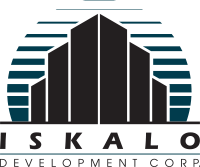Understanding the Occupational Safety and Health Administration (OSHA) guidelines for medical offices is essential for developing and maintaining a safe environment for your staff (and patients). This knowledge helps prevent employees from feeling confused or unsafe during their workday. Feeling comfortable with this information keeps staff members confidently moving through their tasks while working with their patients.
What is a Medical Office?
If you’re looking to open up a practice, you may need to know more about OSHA guidelines for medical offices, as well as what exactly is considered a healthcare facility. Most people know that healthcare facilities consist of primary care clinics and specialized clinics including dentistry, podiatry, cardiology, and neurology. Sexual health clinics, addiction services, mental health clinics, dialysis clinics, and community health centers are also considered healthcare facilities.
Step 1: “OSHA Requirements”
The first step when it comes to OSHA guidelines for medical offices consists of following some important standards. These standards are the Hazard Communication Standard, which ensures medical staff members are knowledgeable of hazardous materials, and the Bloodborne Pathogens Standard, which focuses on preventing exposure to these pathogens. Some of the other important standards in this category are the Ionizing Radiation Standard for x-ray professionals, Exit Routes Standard, Electrical and Fire Standard, Medical and First Aid Standard, and Protective Equipment.
Step 2: “Hazards at Health Care Facilities”
Many employees at medical offices understand there are important protocols they must follow for chemicals, bodily fluids, and emergencies, but often overlook less obvious safety and health hazards. The hazards included in Step 2 of the OSHA guidelines for healthcare facilities are ergonomic hazards, workplace violence, slips, trips, and falls, influenza, tuberculosis, and emergency response hazards.
Step 3: “Survey Your Workplace”
Identifying hazards that can happen in the workplace on a daily basis and maintaining a safe environment for employees is critical. This step focuses on following a customized self-inspection checklist or following one OSHA provides to preserve the secure atmosphere of your medical facility.
Step 4: “Find Information About Health Care Sectors”
Being knowledgeable of the other OSHA-compliant medical offices in your sector provides information to patients who may need to visit offices for specific needs and keeps the medical community secure. Finding compliant local clinicians, home healthcare aids, laboratories, dental offices, nursing homes, and hospitals keeps the medical community and your patients safe.
Step 5: “Develop a Safety and Health Program”
OSHA does not force medical facilities to create health and safety programs or checklists. However, it is suggested and is a very effective way to maintain a safe workplace. Having your employees review the “OSHA Practices for Safety and Health Programs” is a great way to keep medical staff up-to-date with safety practices if they decide not to develop an actual health and safety program.
Step 6: “Train Your Employees”
This step may seem silly, but some businesses do not train employees appropriately when it comes to the OSHA guidelines for medical offices. They may train an employee to specifically meet the requirements of their position; that does not always mean the staff member is knowledgeable of the OSHA guidelines in their office. Keeping staff conscious of these training protocols meets the OSHA guidelines. This also prepares staff more effectively for their position and lets them help around the office if necessary.
Step 7: “Recordkeeping, Reporting, and Posting”
Today’s technology allows employees to rely completely on their tablets or laptops for patient records. However, having backup paper copies can be extremely helpful. By implementing some form of both electronic submission and physical records, practitioners are doing all they can to track changes and details of patient visits.
Step 8: “Additional Compliance Assistance”
For those trying to find more information regarding OSHA guidelines for medical offices, resources are available on the OSHA website. Additional details focusing on the protection of temporary workers and voluntary programs can be found on the website or by consulting with an OSHA professional on-site. Staying up-to-date with these medical regulations will promise your medical facility a comfortable, safe present and future for employees and patients.

